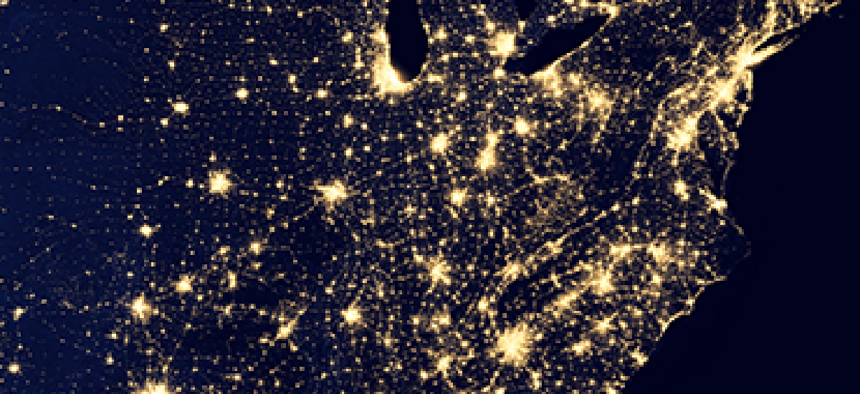NASA website set for overhaul

The overhaul of NASA.gov will make use of ideas the public has submitted through Ideascale. One challenge: Making the site more scalable so that demand spikes caused by new content such as satellite images of Earth at night won't crash the system.

Satellite views of the Earth at night were the latest attraction to crash NASA web servers. (NOAA photo)
NASA.gov, which has been a high-profile web site for nearly two decades, is about to undergo its first redesign since 2007.
FCW recently reported on NASA's use of Ideascale to seek user feedback for the redesign. And in the Nov. 7 podcast from PBS's Mediashift project, NASA.gov content manager Brian Dunbar elaborated on the site and his plans for the revamp.
NASA.gov is one of the most popular government sites on the web, and Time magazine labeled it one of the best overall. But originally, Dunbar said, NASA.gov was run more like a newspaper – it had stories, with photos, but that was it. Today, the website releases videos, integrates social media, is interactive and holds webcasts of live events.
“NASA has its own television service, which provides you with the shots, say, of inside mission control and all the press conferences that we do, and so when we have an event we put it out over the TV service primarily for news media, but we stream it over the web,” said Dunbar. “When Curiosity landed in August, at landing we had 1.2 million webcasts going out for people who were following it online.”
NASA’s web traffic spikes during these large events, Dunbar said, recalling the overloads that resulted way back in 1994, when the Comet Shoemaker-Levy struck Jupiter, and web users flocked to NASA.gov for images of the collision. And then just this week, NASA’s website buckled when the agency released stunning new images of the Earth at night, gathered by the National Oceanic and Atmospheric Administration’s polar satellite program. NASA did not realize how popular the images would get, Dunbar said, explaining that the media was housed on NASA's earth observatory website, which was not prepared to handle high-volume traffic the way the main NASA.gov now can.
In the podcast, Dunbar also touched on how NASA's social media and web audiences overlap only slightly, and said there are plans for bringing the two together. And he said he and his colleagues continue to sift through other suggestions on Ideascale. The most popular idea so far, he said, is to make more science data available to the public -- so NASA’s task now is to figure out exactly what kind of data the public would be interested in.
The full podcast is available on the Mediashift website; the NASA.gov segment begins a approximately the 22-minute mark.





